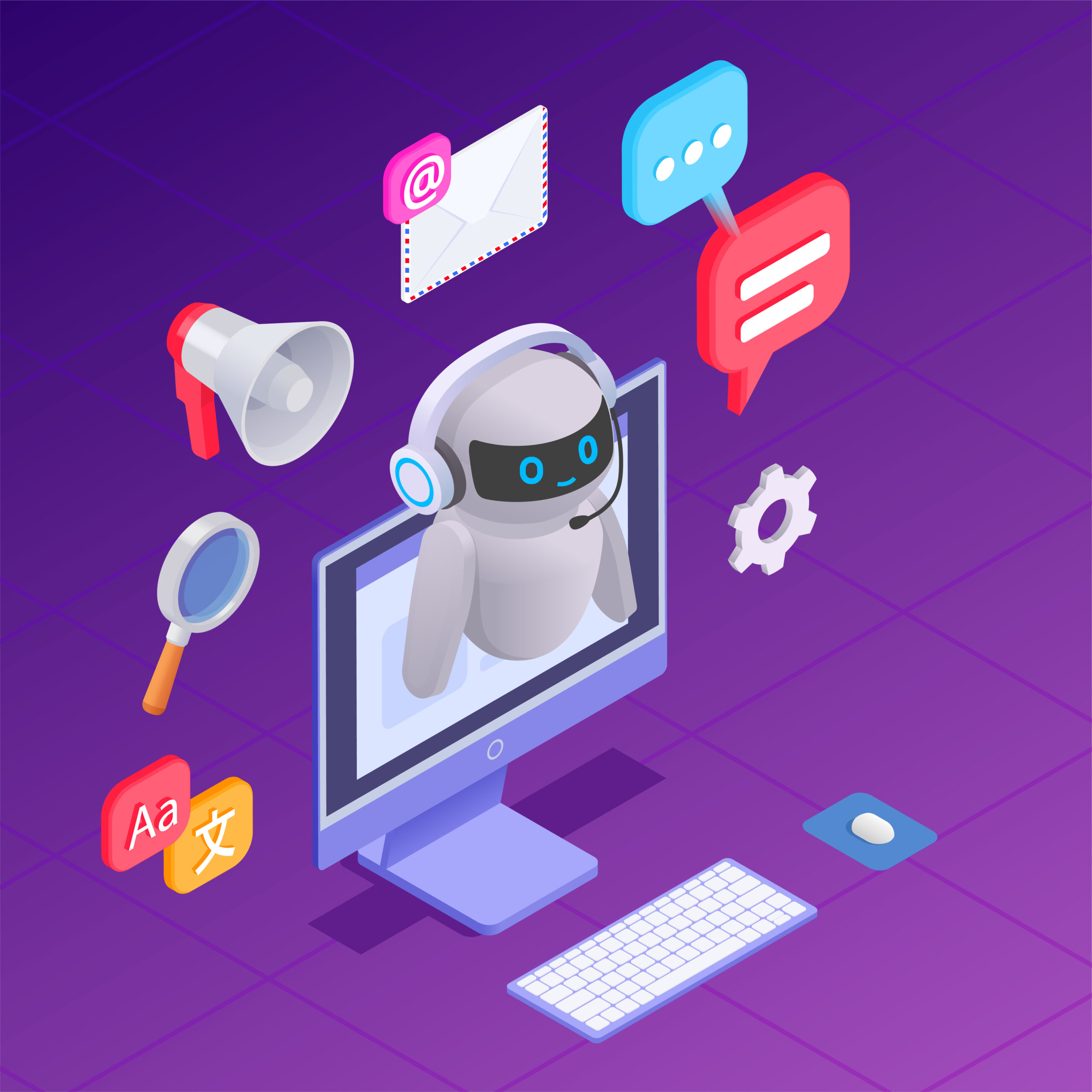Artificial Intelligence (AI) chatbots are transforming the way businesses and organizations interact with customers, offering automation, support, and personalized experiences. As AI technologies improve, developing a functional and effective chatbot becomes an increasingly attainable goal for many developers and businesses. This article will guide you through the key steps required to build an AI chatbot from scratch.
Step 1: Define the Chatbot’s Purpose
Before jumping into the technical aspects of building a chatbot, clearly define its purpose. A chatbot can serve multiple functions depending on the needs of your project. Common uses include:
- Customer support: Providing quick responses to user inquiries.
- E-commerce assistance: Helping customers find products, track orders, or offer recommendations.
- Lead generation: Qualifying prospects and collecting information for sales teams.
- Personal assistance: Helping users with tasks like scheduling, reminders, and basic information retrieval.
By setting a specific objective for the chatbot, you can better design its conversation flow, features, and capabilities. This initial planning phase will set the foundation for the development process.
Step 2: Choose the Right Development Approach
There are two main approaches for building an AI chatbot: rule-based systems and AI-driven models.
Rule-Based Chatbots
Rule-based chatbots follow a fixed set of pre-defined rules. They are designed to answer specific questions or handle specific tasks based on a series of inputs. These bots are typically limited in scope, responding to simple commands or keywords. While they are easy to build, their functionality is constrained by the rules set during development.
AI-Powered Chatbots
AI-powered chatbots use Natural Language Processing (NLP) to understand and generate human-like responses. Unlike rule-based bots, these systems can handle more complex interactions and learn from data. With machine learning algorithms, AI chatbots can improve over time by adapting to user inputs. However, they are more advanced to build and require a solid understanding of AI models, data, and training.
Hybrid Approach
Some developers choose to use a hybrid approach, combining the simplicity of rule-based interactions with the flexibility and learning capabilities of AI. This can help balance efficiency and adaptability.
Step 3: Select the Right Technology Stack
Choosing the right set of technologies is crucial for building a successful chatbot. Several tools and platforms are available, each suited for different purposes and levels of expertise. Here are some of the essential components for developing a chatbot:
Programming Languages
Most chatbot development relies on programming languages like Python, JavaScript, or Java. Python, in particular, is a favorite due to its rich ecosystem of AI and machine learning libraries, such as TensorFlow, Keras, and scikit-learn.
AI and NLP Libraries
To process language and generate intelligent responses, you’ll need libraries and frameworks that can perform tasks like speech recognition, intent classification, and language generation. Some popular options include:
- spaCy: A powerful Python library for NLP tasks.
- NLTK: A collection of tools for text processing and machine learning.
- Rasa: An open-source framework for building AI chatbots with NLP capabilities.
- Dialogflow: Google’s chatbot development platform, offering NLP and pre-trained models.
- Microsoft Bot Framework: A comprehensive framework for building and deploying bots.
Cloud Platforms
To host your chatbot, consider using cloud platforms like:
- Amazon Web Services (AWS): Offers powerful cloud services like Amazon Lex for building conversational interfaces.
- Google Cloud: Provides machine learning APIs and Google Dialogflow for building chatbots.
- Microsoft Azure: Includes tools like Azure Bot Services for creating bots.
Step 4: Design the Conversation Flow
Designing the conversation flow is a crucial step in AI chatbot development. Even AI-driven bots require a clear structure for efficient communication. A well-designed conversation flow ensures that the bot can respond appropriately to user inputs and guide them through interactions.
Build User Intent and Entity Models
In AI-based chatbots, user input is interpreted using two key components: intents and entities.
- Intents represent the goals or actions of the user. For example, a user might express the intent of booking a flight or asking for customer support.
- Entities are the specific pieces of information that the chatbot needs to extract from user input to fulfill the intent. For instance, a flight booking bot might extract the departure city, destination, and travel dates as entities.
Defining these elements is a critical part of building a bot that accurately interprets user input and provides meaningful responses.
Design for Multiple Scenarios
The chatbot should be able to handle various scenarios. This can include:
- Handling frequently asked questions (FAQs)
- Navigating complex queries and directing users to human agents when necessary
- Managing fallback or error responses, such as when the bot cannot understand a query
This phase may involve creating a decision tree or flowchart to map out the possible paths a conversation can take.
Step 5: Train the Chatbot with Data
For an AI-powered chatbot, training with relevant data is essential. The quality and volume of the data directly influence the bot’s accuracy and performance. The process involves feeding the chatbot large sets of examples that cover different ways users might phrase their queries.
Collect Training Data
Start by gathering sample conversations or user inputs that reflect the types of interactions your chatbot will handle. This could involve analyzing past customer service transcripts, email interactions, or feedback. Use this data to create labeled datasets, categorizing inputs by intent and entities.
Train the Model
Once the data is ready, use machine learning algorithms to train the chatbot’s model. Popular approaches for training include:
- Supervised learning: The bot learns from labeled examples, adjusting its parameters to improve predictions.
- Reinforcement learning: The bot learns by trial and error, receiving feedback based on its actions.
- Transfer learning: Pre-trained models, like GPT or BERT, can be fine-tuned on your specific dataset.
Training can take some time depending on the size of the data and the complexity of the task. It’s essential to monitor performance and make adjustments as needed.
Step 6: Implement Chatbot Features and Integrations
Now that your chatbot is trained, it’s time to implement additional features and AI integrate it with external services or databases to enhance functionality.
Key Features
- Natural language generation (NLG): Generate human-like responses to maintain conversational flow.
- Context retention: The bot should remember previous user inputs within a conversation, so it doesn’t repeat questions or offer irrelevant information.
- Multilingual support: For global audiences, incorporate multilingual capabilities to handle queries in different languages.
Integrate with APIs and Databases
To extend the functionality of your chatbot, integrate it with third-party APIs and databases. For example, an e-commerce chatbot might need to query a product database or check inventory in real time.
You can also use APIs to integrate features like payment processing, order tracking, or even connecting the bot to customer support systems.
Step 7: Test the Chatbot
Testing is one of the most important steps in chatbot development. After building the core features and training the model, conduct rigorous testing to ensure that the bot performs as expected.
Types of Testing
- Unit testing: Test individual components of the chatbot, such as intent classification, response generation, and integration with APIs.
- Functional testing: Evaluate the chatbot’s ability to perform its core functions, such as booking a flight or answering user questions.
- User testing: Have real users interact with the chatbot to identify potential issues or improvements in the user experience.
- Load testing: Ensure the chatbot can handle a high volume of interactions without crashing or becoming unresponsive.
Testing should be an ongoing process, with continuous feedback from users and stakeholders helping to refine the chatbot over time.
Step 8: Deploy the Chatbot
Once testing is complete and you are satisfied with the chatbot’s performance, it’s time to deploy it to your chosen platform. This could involve integrating the chatbot with:
- Websites: Embed the chatbot in a website’s customer support section or as a live chat option.
- Mobile apps: Deploy the chatbot within a native mobile app.
- Social media: Use platforms like Facebook Messenger, WhatsApp, or Slack to reach users.
Ensure that the chatbot’s deployment is secure, reliable, and scalable to handle varying levels of user interactions.
Step 9: Monitor and Maintain the Chatbot
After deployment, the work is far from over. Regular monitoring and maintenance are necessary to ensure that the chatbot remains functional and up-to-date. Monitor user interactions to identify areas for improvement or patterns that the bot might have missed. Additionally, gather feedback from users to adjust and refine the conversation flow.
As new use cases or business needs arise, periodically retrain the model with new data to ensure it continues to improve. Keep track of performance metrics, such as response time, user satisfaction, and issue resolution rates.
Conclusion
Building an AI chatbot is an iterative process that involves careful planning, development, testing, and ongoing optimization. By selecting the right tools, training the model with relevant data, and continually improving the chatbot’s performance, you can create an intelligent assistant that enhances user experiences and drives value for your business. Whether you’re building a simple FAQ bot or a complex virtual assistant, these steps will help guide you through the development process and lead to a functional, effective AI chatbot.








